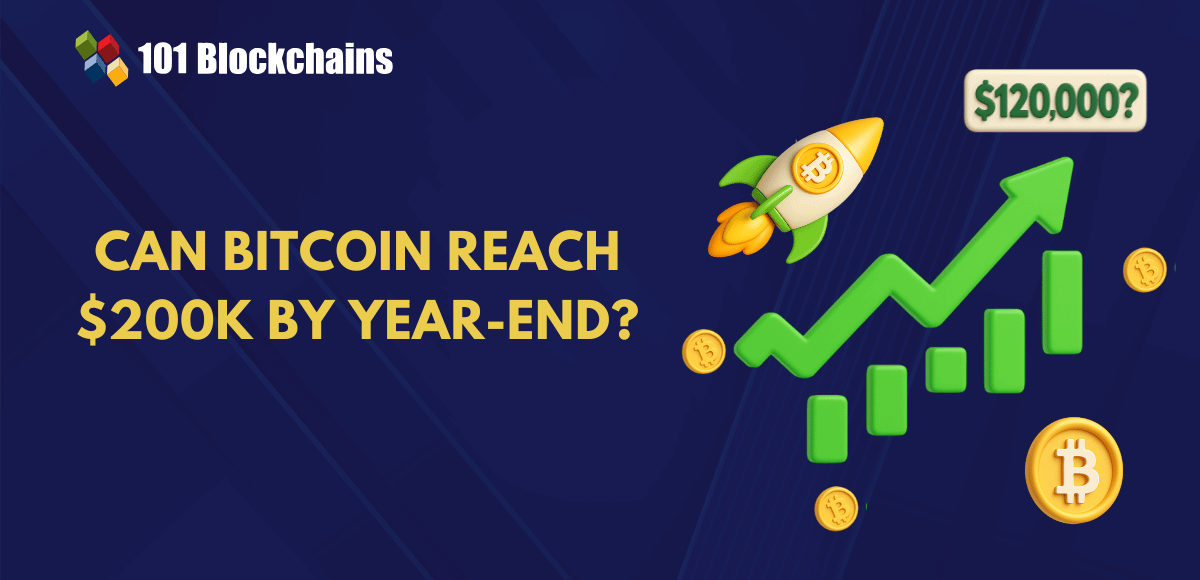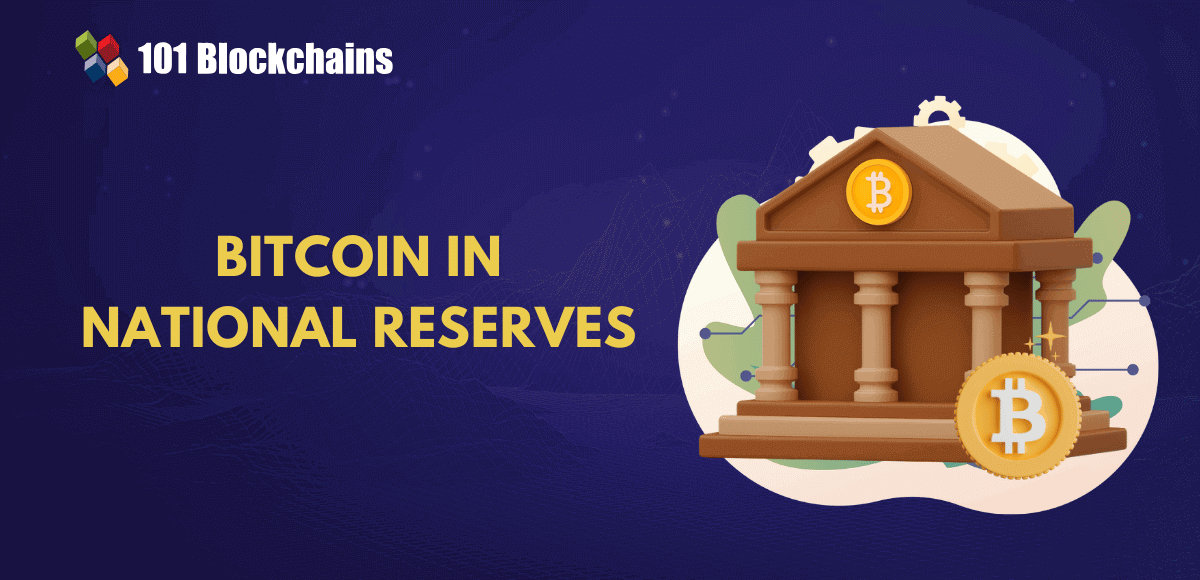Advance your career with in-demand Bitcoin expertise—enroll in the Certified Bitcoin Professional (CBP)™ Certification today.

- Bitcoin
James Howell
- on November 25, 2022
Satoshi – Understanding the Smallest Unit of Bitcoin
Bitcoin is one of the most popular blockchain networks right now, known as the top cryptocurrency in terms of market capitalization. It has become the benchmark for any new cryptocurrency in terms of security and network. Satoshi Bitcoin is an effective instrument for increasing the participation of users in the crypto community.
As the smallest unit of Bitcoin, Satoshi could help users in entering the Bitcoin ecosystem with limited resources. Why? The value of 1 Bitcoin is around $20,500 at the time of writing, and the average investor would find it difficult to invest a massive amount of money in Bitcoin. On the other hand, dividing a Bitcoin into multiple affordable units could offer the chance to invest your money in Bitcoin. Why did anyone think of developing small units of Bitcoin?
As the crypto landscape continues expanding gradually, the smallest Bitcoin unit has proved its usability for different uses. Most important of all, you are more likely to find it easy to own Satoshi rather than multiple Bitcoin. The following post will help you uncover details regarding the origins of Satoshi and its significance in the cryptocurrency landscape.
Enroll now in the Bitcoin Technology Course to learn about Bitcoin mining and the information contained in transactions and blocks.
Where Did It Start?
The most pressing question for any individual reading about blockchain and cryptocurrencies would always point to the origins. If you want to know about Satoshi in Bitcoin, you must have a clear impression of the origins of Bitcoin. The year 2008 heralded the arrival of Bitcoin, the world’s first cryptocurrency. Its founder, Satoshi Nakamoto (a pseudonym), released a whitepaper citing the technicalities of a peer-to-peer electronic cash system.
Bitcoin was developed as the solution for double-spending in transactions involving digital assets. Most of the digital currency projects before Bitcoin had failed as they could never reach the completion stages. However, Bitcoin arrived with a proof of concept and strengthened its position gradually over many years.
Before you figure out the answers to ‘what is Satoshi’, you must know about a fascinating incident involving Bitcoin. Was Bitcoin always this expensive? No. Did you know that a man purchased two pizzas for 10,000 BTC in 2010? As of now, 10,000 BTC would have made him a millionaire, only if he wasn’t hungry on that fateful day. The incident reflects how the popularity of Bitcoin has grown over a decade. At the same time, the rise of Bitcoin also prompted growth in the development of alternative cryptocurrencies.
Build your identity as a certified blockchain expert with 101 Blockchains’ Blockchain Certifications designed to provide enhanced career prospects.
Defining the Need for Satoshi
Bitcoin has experienced many significant price fluctuations since its inception. At the same time, the perception of the general public towards Bitcoin and cryptocurrencies have changed. Blockchain technology and cryptocurrencies have found recognition in mainstream tech terminology while offering the foundation for many applications.
The Satoshi BTC connection is also evident in the basic objective of Bitcoin, i.e., avoiding double-spending. You can use a physical coin or a currency bill for one transaction only, such as an exchange for goods or services. In such transactions, one individual loses the good, and the buyer gains its possession. Similarly, the currency paid by a buyer implies that the buyer loses it and the seller gains it.
Concerns of double spending would refer to problems of spending the same amount multiple times on different transactions. The peer-to-peer ledger plays a crucial role in resolving the problem alongside the consensus mechanism. As a result, a cryptocurrency or BTC or Satoshi owner could not spend the same cryptocurrency in multiple transactions.
Want to get an in-depth understanding of crypto fundamentals, trading and investing strategies? Enroll now in Crypto Fundamentals, Trading And Investing Course.
Definition of a Satoshi
The simplest approach to explain Satoshi to a beginner is to present it as the basic block of Bitcoin. You must probably be thinking about Satoshi’s unit of measurement and its significance in the broader blockchain and crypto ecosystem. The quantification of Satoshi suggests that 1 Bitcoin would equal almost 100 million Satoshi.
Therefore, 1 Satoshi equates to almost 0.00000001 BTC. On top of it, Satoshi is not the only division of Bitcoin. You can also find the term ‘millibitcoin,’ which equals almost 0.001 BTC. In addition, one-millionth of a BTC or 0.000001 BTC is referred to as a microbitcoin. Interestingly, you can explore many other interesting factors beyond “how much is 1 Satoshi” as the Lightning Network can offer the flexibility of transactions with smaller units than 1 Satoshi.
Bitcoin and Satoshi are not associated with any significant currency pair. However, you would not experience any issues in converting between different currencies. You could use crypto exchanges to convert fiat currencies into cryptocurrencies. You can deposit fiat currencies such as pounds or dollars in your account on a crypto exchange. Subsequently, you could convert the fiat currencies into Satoshi BTC for use at different merchants who support crypto payments.
The block reward for mining 1 Bitcoin or 100 million Satoshi also goes through halving every four years. As a result, you can find the smallest Bitcoin unit being created at a gap of every 10 minutes. This is where you can identify the importance of Satoshi. The availability of Satoshi creates possibilities for halting the process of minting new Bitcoins in the future. At the same time, continued minting of new BTC tokens in further smaller amounts than Satoshi is practically impossible.
You might also be intrested in our FREE presentation on Top Bitcoin Interview Questions & Answers
History of Satoshi
While Bitcoin takes the crown for being the first cryptocurrency, Satoshi was not even in the picture. However, the term Satoshi has more significance in the crypto world now than ever. It is one of the most commonly used terms in the discussions around crypto and blockchain technology. A Bitcoin mining software, HoneyMiner, takes responsibility for the payment of mining rewards in SAT.
The popularity of Satoshi Bitcoin is also evident in multiple hashtags on social media about SAT. In addition, the Lightning network payment system, Lightning Torch, accounts for Satoshi. One of the interesting facts about Satoshi is that it has been around in the crypto and blockchain landscape since 2011. However, it had to wait for a long time before gaining mainstream attention.
The origins of Satoshi in Bitcoin also provide a valid reason for its name. It is a direct reference to the founder of Bitcoin, Satoshi Nakamoto. A BitcoinTalk user suggested that 0.01 Bitcoin should be termed as Satoshi in November 2010. The number was the smallest value visible on the Bitcoin network interface in 2010.
The BitcoinTalk user did not receive any endorsements for his idea and had to abandon it. Ultimately, the community took notice of his suggestion in February 2011, and users offered positive feedback on the proposal. For the first time, Bitcoin users agreed on the benefits of smaller units of Bitcoin, thereby setting the foundation for Satoshi.
How Can You Use Satoshi?
The definition of Satoshi increases interest in methods for using it. The majority of the attention around Satoshi’s unit of measurement is due to the growing popularity of Bitcoin. You can draw similarities between Satoshi and the divisions of stock of a highly valued company on the exchange.
The splitting of stock into multiple shares would ensure that individual shares can gain more value. At the same time, it is important to note the psychological impact of presenting a smaller unit of Bitcoin. On the other hand, users could opt for popular altcoins rather than a denomination of Bitcoin. Satoshi offers a user-friendly name alongside the transactions and solves the problem.
Using Satoshi as the smallest Bitcoin unit offers credible benefits in terms of utility. You can use the Bitcoin fractions for facilitating small transactions, such as purchasing coffee or making a payment for an online purchase. Potential investors could enter the Bitcoin landscape with just $1 without the need to purchase a complete Bitcoin.
The only potential risk associated with Satoshi is evident in its magnitude. You can communicate “what is Satoshi” and its benefits to prospective users. General user instinct might drive them away from dealing with decimals and fractions. For example, merchants could not price products in terms of 0.0001 BTC as it could confuse customers during the checkout process. Cryptocurrencies are gradually attracting new users, and new avenues for participating in the crypto ecosystem have been developing profoundly in recent years.
Satoshi could reduce the confusion for customers as it serves as a single unit. However, the growth of Satoshi has been considerably slower due to price bias. On the contrary, people associated with the crypto industry have discovered additional opportunities for using Satoshi or SAT in different use cases.
Embrace the technological leap and global adoption that awaits in the upcoming bull run of 2024-2025 with Crypto Bull Run Ready Career Path.
Value of Satoshi
The division of Bitcoin into Satoshi and the equation of 1 Bitcoin equal to 100 million Satoshi show how you can measure Satoshi. Now, you must be wondering, “how much is 1 Satoshi” and the answer is quite obvious. Bitcoin also works like fiat currencies such as the dollar, pound, and euro, which have distinct denominations for multiple small units. As a result, it can also be divided into smaller denominations. The biggest reason behind the division of Bitcoin is to enable its applications in the real world. The price volatility of Bitcoin could ensure that it is significantly expensive to buy and could result in massive losses on a large scale.
The value of one Satoshi in Bitcoin refers to 0.00000001 BTC. In some cases, you can also find additional tickers in the case of Bitcoin forks, like Bitcoin Cash or BCH and Bitcoin SV or BSV. The high price of Bitcoin can prevent crypto investors from purchasing multiple Bitcoin units. Irrespective of the facility for purchasing cryptocurrency in fractions, most prospective investors wonder about problems with the high listing price. A large section of the crypto community has called for listing Bitcoin in the form of Satoshi units. It would directly improve the accessibility of Bitcoin and would become more attractive to investors.
Is It Possible to Buy a Fraction of Bitcoin?
You can use Satoshi Bitcoin to exercise Bitcoin ownership rather than purchasing one complete Bitcoin. The fraction of Bitcoin in the form of Satoshi allows you to circumvent the barriers to entry into the Bitcoin community. Smaller denominations of Bitcoin present better scope for owning a small fraction of Bitcoin. If you take the different costs of owning one Satoshi, including exchange and transaction fees, you have to pay almost $20. The fraction of Bitcoin also offers a well-recognized denomination, which can go on crypto exchange listings in the future.
You should know that buying Satoshi is equal to buying Bitcoin. While the two terms refer to the same cryptocurrency, you have the benefits of smaller monetary units, such as flexibility. In addition, you are also likely to be safe from humongous losses in event of market downturns.
Test your cryptocurrency knowledge with our flashcards on Cryptocurrency Flashcards.
Satoshi and Gwei
Another notable factor that could show you more details about smaller monetary units of popular cryptocurrencies refers to Gwei. It is the basic gas fee unit on Ethereum and is an integral component for transactions on Ethereum. The Satoshi unit of measurement and Gwei have distinct purposes in the domain of cryptocurrencies. It is possible to divide cryptocurrencies into eight decimal places, with substantial differences in comparison to fiat currency. The new denominational structures work on ensuring the utility of Bitcoin and Ether, irrespective of the value of the transaction.
Purchasing cryptocurrency tokens worth thousands of dollars is almost the same as purchasing groceries from a store with crypto payments. In addition, some of the notable cryptocurrency denominations have come up with distinct names. You can think of them like dividing a dollar into cents. Wei is the smallest unit of Ethereum, and one ETH amounts to almost 1,000,000,000,000,000,000 Wei.
As of now, Wei has not gained any significant popularity in terms of transactions. Gwei amounts to almost 1 million Wei, and it is the official denomination on Ethereum now. Therefore, users can say that the gas fees cost 1 Gwei rather than expressing it as 0.000000001 ETH. Experienced users also simplify the meaning of Ethereum transactions through the conversion of Wei to Gwei.
The examples of Satoshi in Bitcoin have also fuelled many other smaller units of popular altcoins. For example, the smallest denomination of Stellar LUMENS or XLM is referred to as a Stroop, where 1 Stroop equals 0.0000001 XLM. Similarly, it is possible to divide the Binance token or BNB into smaller units, known as jager. Another similar smaller denomination would refer to the ADA blockchain, which has the smallest unit, known as Lovelace. It has been considered a tribute to a renowned computer programmer, Ada King.
Want to learn about the Ethereum Technology? Enroll now in Ethereum Technology Course
Bottom Line
The introduction to Satoshi revolves around the advantages of smaller monetary units of cryptocurrencies. Blockchain technology and cryptocurrencies have gained mainstream attention recently and offer new opportunities. You can use Satoshi Bitcoin as an easier resource for exercising ownership of Bitcoin without worrying about volatility risks. Investors could enter the Bitcoin community without the mandatory obligation of purchasing one Bitcoin.
On the contrary, the smaller denomination, Satoshi, allows prospective investors to find a cost-effective gateway into the world of Bitcoin. At the same time, it is also important to note the different applications of Satoshi for increasing the mainstream adoption of cryptocurrencies. As the interest in cryptocurrencies grows stronger every year, more people would like to have a share in cryptocurrencies. Explore to know about the chance of owning Bitcoin with a Satoshi now.
*Disclaimer: The article should not be taken as, and is not intended to provide any investment advice. Claims made in this article do not constitute investment advice and should not be taken as such. 101 Blockchains shall not be responsible for any loss sustained by any person who relies on this article. Do your own research!






